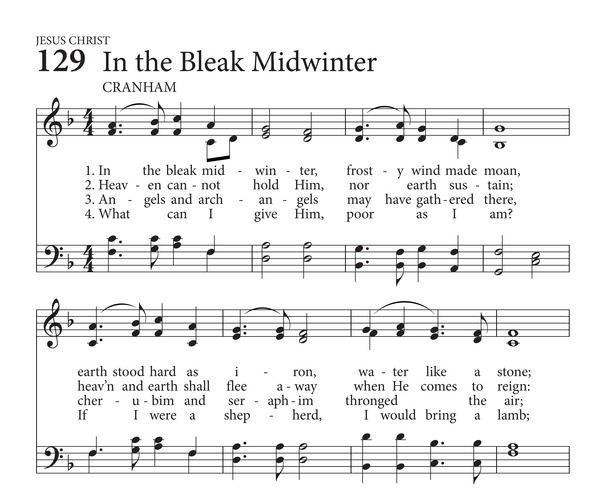'In te Domine' from 'Te Deum,' H 146, Marc-Antoine Charpentier
- Fr. Scott Haynes

- Dec 31, 2021
- 2 min read
Fr. Scott A. Haynes
Overview
Marc-Antoine Charpentier composed six Te Deum, although only four of them have survived. Largely because of the great popularity of its prelude, the best known is the Te Deum in D major, H.146, written as a grand motet for soloists, choir, and instrumental accompaniment probably between 1688 and 1698, during Charpentier's stay at the Jesuit Church of Saint-Louis in Paris, where he held the position of musical director. In te Domine is the final movement of the Te Deum, H. 146.
Charpentier wrote his Te Deum, H. 146, in the key of D-major, which he described as "bright and very warlike";[1] indeed D-major was regarded as the "key of glory" in Baroque music. The final verset, In te Domine, is a large-scale fugue written for choir, with a short trio for soloists in the middle.[1]
Text & Translation
In te Domine speravi non confundar in aeternum. ("In Thee, O Lord, have I put my trust, let me never be confounded"). Psalm 70:1 (Vulgate).
About the Recording
Choir of St. John Cantius, Chicago
Conductor: Rev. Scott A. Haynes
Concert Master: Henry Criz
Soloists: Roger Pines, Countertenor, Trevor Mitchell, Tenor, and David Dubois, Bass
Organist: Walter Whitehouse
Sony Classical Label
About the Composer
Marc-Antoine Charpentier (1643 – 1704) was a French Baroque composer during the reign of Louis XIV. One of his most famous works is the main theme from the prelude of his Te Deum, Marche en rondeau. This theme which is still used today as a fanfare during television broadcasts of the Eurovision Network, the European Broadcasting Union.
Marc-Antoine Charpentier dominated the Baroque musical scene in seventeenth century France because of the quality of his prolific output. He mastered all genres, and his skill in writing sacred vocal music was especially hailed by his contemporaries.
He began his career by going to Italy, there he fell under the influence of Giacomo Carissimi as well as other Italian composers, perhaps Domenico Mazzocchi. He would remain marked by the Italian style and become the only one with Jean-Joseph Cassanéa de Mondonville in France to approach the oratorio. In 1670, he became a master of music (composer and singer) in the service of the Duchess of Guise.
From 1690 Charpentier composed Médée, on a piece by Corneille. It would be a determining failure in his career of composer: he devoted himself henceforth to the religious music. He became the composer of the Carmelites of Rue du Bouloir, Montmartre Abbey, Abbaye-aux-Bois and Port-Royal. In 1698, Charpentier was appointed music master for the children of the Sainte-Chapelle du Palais.
He composed secular works, stage music, operas, cantatas, sonatas, symphonies, as well as sacred music, motets (large or small), oratorios, masses, psalms, Magnificats, Litanies. At his death, Charpentier's complete works must have numbered about 800 opus numbers, but today only 28 autograph volumes remain, or more than 500 pieces that he himself took care to classify. This collection, called Mélanges, is one of the most comprehensive sets of musical autograph manuscripts of all time.
Footnote
Charpentier, Marc Antoine (2004). Te Deum (H.146). Vocal score. Translated by Taylor, Steve. Kassel: Bärenreiter Verlag. pp. v–viii. ISMN M-0006-52543-0



Comments